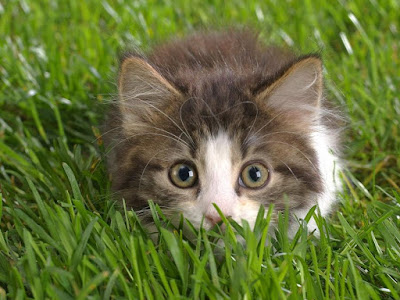Sadly my time of learning at Sheridan College is coming to an end. However, that does not mean I am finished with learning; I will always be learning and improving on my writing and advertising. Accumulating more knowledge in these areas will only help my success.
For those of you out there who are considering Advertising as a career choice, look into post-graduate programs to help you specialize in the field. Programs such as Sheridan's Post-Grad Advertising Account Management Program can provide knowledge that will benefit you in your future endeavours. Through my post-education learning experience, I have developed skills in both my writing (creativity) and various areas of advertising: digital, account management, sales, creative, media, laws and ethics of advertising, and so much more. The opportunities are endless.
If you are unsure where you fit within the industry, then a post-grad program may be right for you. Post-grad programs can provide the knowledge and skills required of all areas in the advertising industry, so you can have a sense of where you are most passionate or qualified.
 I have been asked many times: why advertising? How did you first get interested in the industry? It's actually kind of funny. I knew from high school that I was going to end up in the advertising world. I planned out my education from there: Western University for 4 years and 1 year of post-grad education at Sheridan College. I've always been a creative individual. Since I was eighteen, I have had a wide imagination that has been hard to contain. As a result, I found a love for writing fiction novels. So logically I was seeking a career that would allow me to use that creativity in more complex ways. Advertising seemed to reach out to me. The idea of physically designing what billboards or commercials would look like suddenly appealed to my passionate side. Upon learning more about the industry, I was driven to account management to balance my imagination with writing and my creativity/business side with advertising.
I have been asked many times: why advertising? How did you first get interested in the industry? It's actually kind of funny. I knew from high school that I was going to end up in the advertising world. I planned out my education from there: Western University for 4 years and 1 year of post-grad education at Sheridan College. I've always been a creative individual. Since I was eighteen, I have had a wide imagination that has been hard to contain. As a result, I found a love for writing fiction novels. So logically I was seeking a career that would allow me to use that creativity in more complex ways. Advertising seemed to reach out to me. The idea of physically designing what billboards or commercials would look like suddenly appealed to my passionate side. Upon learning more about the industry, I was driven to account management to balance my imagination with writing and my creativity/business side with advertising.Advertising is not merely creating and executing advertisements. There is so much more that goes into the industry than most people realize. There are plenty of opportunities in developing campaigns, creating content, buying and selling advertising space, digital advertising, mobile advertising, integrated marketing communications, the laws and ethics of advertising… I could go on but I'm sure you are able to research more about the available jobs in the industry. Or you could enter a post-grad program to increase your knowledge in the industry to find your place among it.
 By communicating with others in the advertising world and following my passions, I have found my way. Now it is time to find yours.
By communicating with others in the advertising world and following my passions, I have found my way. Now it is time to find yours.Cheers, to your new beginnings.



























